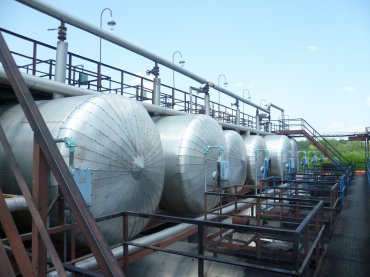MOSCOW – Licensing for used oil collectors and legislation that restricts waste oil dumping and incineration could improve Russias rerefining industry, a consultancy found, though it remains hindered by lax law enforcement and a lack of state and private incentives.
Russia collected about 600,000 metric tons of used lubricants in 2015, and most of it was used as fuel, while about 50,000 tons were processed for production of base oils, according to Parsippany, N.J.-based Kline & Co.
Used oil collection rates in North America and Europe are among the highest in the world; in these regions more than 70 percent of the generated used oil is collected. In 2015 – the base year for the study – Russia collected about 54 percent of generated used oil, Kline found in its recently completed study, Global Used Oil Market the Rerefining Industry.
Russian rerefiner Rosa-1 estimated that the country generates about 1.1 million tons of used oil annually. In 2015 Russia consumed 1.6 million tons of finished lubricants, according to Kline.
In Russia, the used lube oil industry is fragmented, with the existence of many small collectors and transportation companies, Gabriel Tarle, Klines senior analyst for petroleum specialties, told GBCs Base Oils and Lubricants conference here May 23. There are a smaller number of regional players, as well as used lube oil traders and aggregators, but the vertical integration is limited, and Rosa-1 is the only rerefiner in the country.
Rosa-1s rerefinery in Ryazan has capacity to process 40,000 tons of waste oil per year to produce API Group I base oils and commercial lubricants. Rosa-1 has a wide collection network, but the finished product volumes are very small and amount to around 30,000 t/y, way smaller than the used lube oil [volumes] burned in the country, Tarle said.
The Klines study covers six markets – North America, China, Western Europe, India, Russia and Brazil – which accounted for 24.6 million tons or 63 percent of the global lubricant demand in 2015. These six markets generate about 14 million tons of used oil.
Russias key waste oil collection and treatment regulations include a federal law from 1998 that mandates treatment and handling of various industrial and consumer wastes and technical regulation 030/2012 of the Custom Union (a supranational administrative body that Russia shares with Belarus and Kazakhstan) on the requirements for lubricating materials, oils and special fluids. This technical regulation was amended by a 2014 regulation with specific guidelines and rules for waste oil treatment.
Last year Russia introduced obligatory licensing for used oil collectors, and it is a positive development, Tarle noted.
Kline found that Russia lacks clear enforcement of these regulations, and depth and reach in its used oil collection infrastructure. [Russia needs] stricter regulations and enforcement, which will result in greater collection rates, similar to that in the U.S., Canada and the Western Europe, Tarle said.
The consultancy also found that used oil collection volumes are higher in countries that offer incentives for collection and processing of used oil. For example, in Italy and Spain, an Extended Producer Responsibility (EPR) scheme is applied. The EPR scheme consists of a deposit refund system implemented in order to subsidize the industry. The deposit is funded by lubricant producers, and the refund is accrued to collectors, rerefiners and fuel processors, depending on the scheme. As a result, the collection rates in the U.S., Canada and Europe are higher than 70 percent.
Furthermore, in all markets, most leading rerefiners have a business division or a sister company dedicated to the collection of used oils. These collection companies have a well-established network of collection points, tank farms for the accumulation of used oil in a region, used oil collection trucks, bulk shipment trucks and rail cars.
The analyst said particular weaknesses in Russias waste oil collection and treatment practices include the following points:
- No centralized collection system. Generators have to find collectors.
- Logistical challenges. Access to quality feedstock is limited. Heavy industries in far-flung places end up reusing used oil on site or dump it.
- Lubricant blenders are not interested in rerefined base oil, because the virgin base oil market is oversupplied in Russia. The lack of rerefining capacity means that a significant quantity of used oil is diverted to fuel applications.
- Do-it-yourselfers use used oil for lubricating locks, bicycle chains and door hinges. Used oil is also used for impregnation of wood blocks to protect from insects and rot and to protect metals from corrosion.
Photo courtesy of Rosa-1

Kline found several strengths that could give Russia great potential to develop a robust rerefining industry. It is the largest finished lubricant market in Europe in volume terms. The new [2014] law prohibits dumping of the used oil on ground or in water streams, or burning it without removing all heavy additives from it. This has resulted in increasing the necessity of collecting and regeneration of used oil, while the obligatory licensing for collectors introduced in Russia in the beginning of 2016 will play a positive role, Tarle concluded.